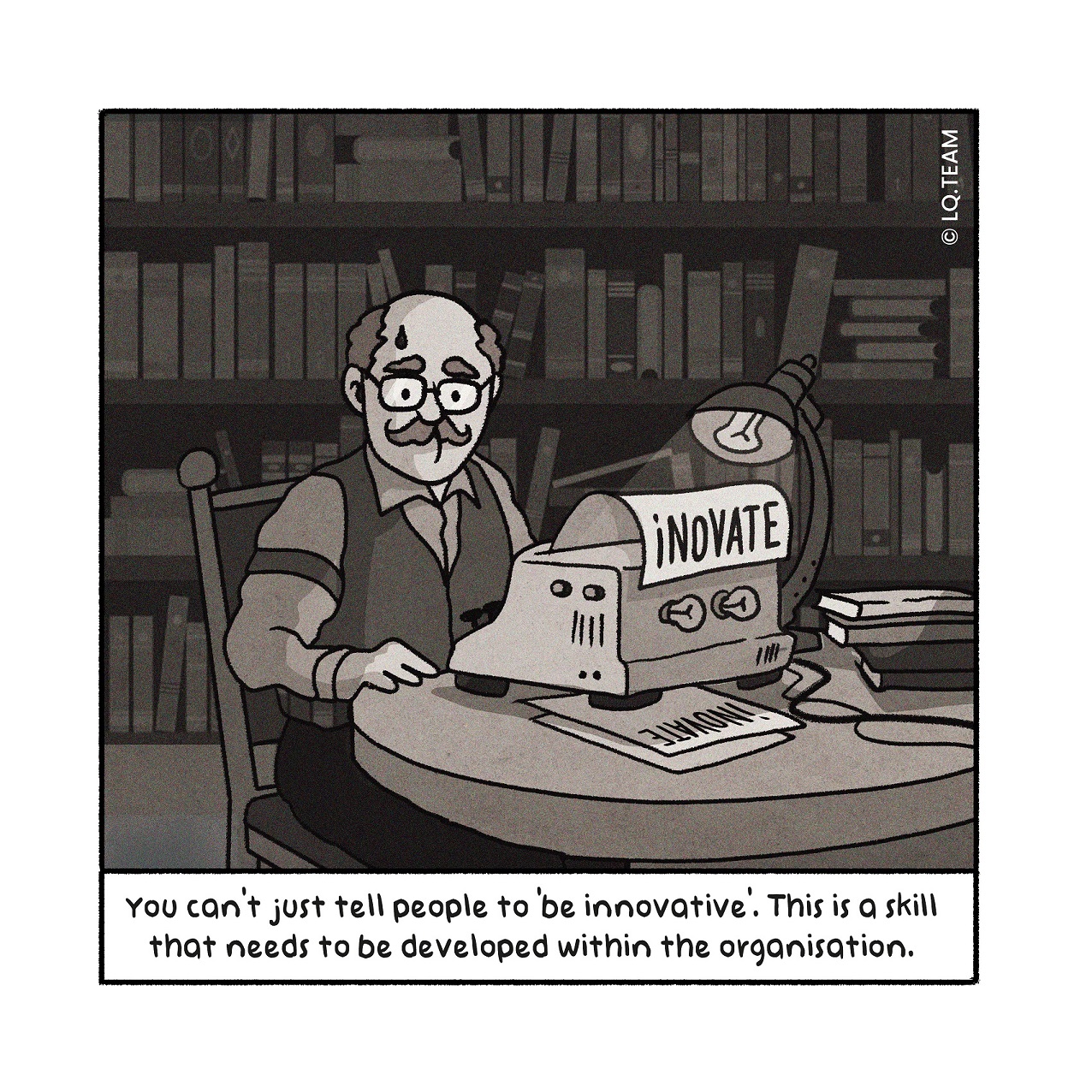
Nut to crack: How do you increase the organisation’s innovative capabilities to make strategic goals a reality?
Suppose the turnover from innovation is different from what it should be. Or you are overtaken by start-ups or scale-ups because they introduce products to the market faster, introduce new business models, or offer a more attractive proposition to customers. You can start “shouting” at the people in your or- ganisation to become more innovative, but if that was never a skill developed internally, how do you build innovation power quickly and effectively?
Nutcracker: Adopt lean start-up concepts
To survive, start-ups and scale-ups have often learned lean start-up ways of working that make them faster, more agile and more customer-oriented than many older organisations. Organisations struggling with their ability to innovate can use these start-ups and scale-ups for inspiration, provided they allow themselves to learn from them rather than judge or oppose them. The support tool below and the practical example describe this in more detail.
Support tool: Working with design sprints
A design sprint is an intensive process of several days in which a fundamen- tal issue surrounding the customer experience is tackled and resolved in an “agile” manner.
This one-week process is as follows:
- On Monday, the customer experience issue is looked at more closely, and the team will frame the problem. Experts are also invited to look at the
- On Tuesday, the focus is on “ideation”: the team tries to come up with as many innovative solutions as possible that provide an answer to the problem. Depending on the need for additional data, conversations with consumers are held to refine customer needs or to collect or enrich
- On Wednesday, the proposed solutions are weighed against each A choice is made for one specific solution that best meets customer demand and represents the most potential business value.
- Thursday is all about “prototyping”: the team members build the first ver- sion of the solution, whether it be an online or offline experience, or a demo product or service.
- On Friday, the team receives the first reactions by testing the prototype with customers.
After the sprint, the group continues to validate the most promising concepts.
Next, validated concepts are presented to the investor board, and depending on that decision, the team may or may not continue developing them. The investor board determines how much budget can be provided and what the next milestone is with which the team should come back; this is often after a maximum period of three months. By scaling in short cycles and having the budget dependent on progress and results, your organisation will get a better grip on the quality of your innovation funnel.
Real-life example: Steal with pride
A media company is being overtaken left and right by smaller players in the market. The ceo wonders how best to respond to these aggressive and agile newcomers. He decides to learn from them as much as possible. These startups work in small, 100 per cent dedicated teams. Innovation focuses on the product and the business model, and the teams start without an extensive business plan. They measure success in terms of the progress made and cash position, and they validate value for consumers with “minimal viable products”: no external agency is involved. They continuously test, adapt and say goodbye to ideas and people.
So the ceo decides to free up teams, set them apart, guide them like a startup, behave like an investor and only reintegrate them once they have proven value in the market. A year and a half later, this has led to cutting the average time between initiation and launch significantly, multiple new productmarket combinations have proven to be suc cessful and it led to growth in annual turnover coming from innovation.
Tip for change leader
Take part in a design sprint to experience how customer profiling works, how it feels to conduct customer conversations on the street, how to build a product prototype in one day and how to prepare a presentation for a board of investors. Going through this experience once will make you a better coach for your teams in the future.
Tip for change enabler
Preparing for the sprint is just as important as the sprint itself. Pay attention to the following:
- Put together a multidisciplinary, complementary team bringing together the requisite knowledge
- Closely coordinate scope and mandate with the main internal stakeholders
- Provide an inspiring location that can provide the proper focus and foster creativity
- Book the sprint days well in advance in the participants’ agendas
- Always make sure that the change leader is present at the crucial moments of the sprint; for example, at the beginning and the end of each day
Kernel: Do not oppose it, but learn from it
The lean start-up and agile working methods of start-ups and scale-ups bring a significant degree of innovative capacity to an organisation. Learn from these to increase your organisation’s innovation capacity in product, service and business model innovation. Design sprints help to accelerate innovation at regular intervals; they bring execution power, enabling employees to at- tempt new ways of thinking and working.
